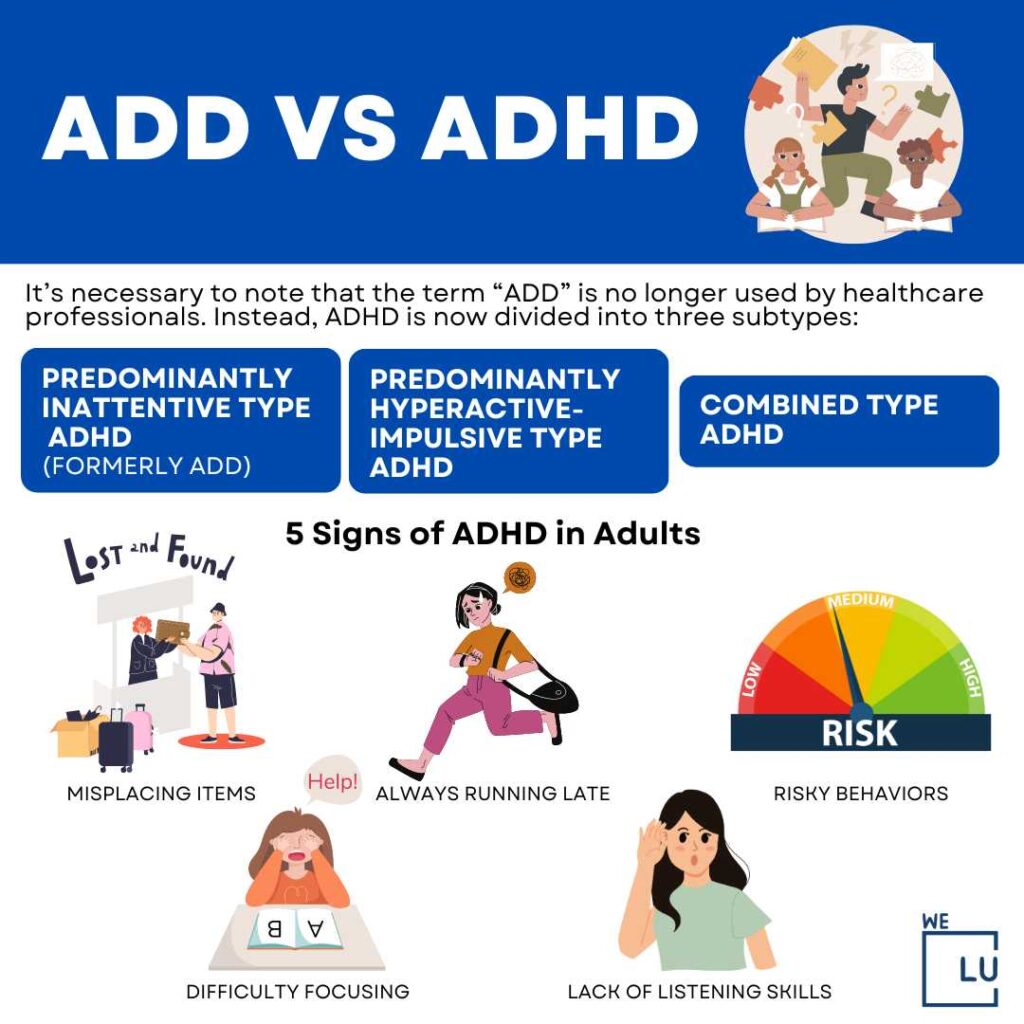ADHD Paralysis Overview
Attention Deficit Hyperactivity Disorder (ADHD) is a neurodevelopmental condition that affects individuals of all ages, impeding their ability to maintain focus, regulate impulses, and organize tasks. While the core symptoms of ADHD are well-known, a lesser-discussed but highly impactful aspect of this disorder is ADHD paralysis. In this article, we delve into the intricacies of ADHD paralysis, shedding light on its definition, manifestations, and profound impact on the lives of those affected.
Throughout this article, we aim to explore the various dimensions of ADHD paralysis. We will examine its impact across domains, from academic or professional pursuits to personal relationships and day-to-day responsibilities. By understanding the challenges individuals with ADHD face when confronted with paralysis, we can gain insight into the intricate interplay between executive dysfunction and their daily functioning.
ADHD Paralysis Meaning
ADHD paralysis refers to the pervasive difficulty experienced by individuals with ADHD in initiating and completing tasks. It manifests as a sense of being mentally “stuck,” making it arduous to take action, make decisions, or maintain focus. This phenomenon arises from executive dysfunction, a hallmark of ADHD, which encompasses impaired executive functioning skills such as planning, organizing, prioritizing, and executing tasks effectively.
ADHD task paralysis
Task paralysis is a common struggle experienced by individuals with Attention Deficit Hyperactivity Disorder (ADHD), where they encounter significant difficulty in initiating and completing tasks. This phenomenon, often referred to as ADHD task paralysis, can profoundly impact various aspects of daily life, from work and school to personal responsibilities and relationships.
ADHD task paralysis can manifest in various ways. Individuals may constantly procrastinate, unable to initiate important tasks or projects. They may struggle with prioritizing their responsibilities, feeling overwhelmed by the multitude of tasks at hand. Completing assignments, meeting deadlines, and staying on track can become formidable challenges, leading to a cycle of stress and anxiety.
The impact of task paralysis extends beyond personal frustrations. In academic or professional settings, individuals with ADHD may experience setbacks in their performance, leading to feelings of inadequacy and self-doubt. Interpersonal relationships can also be affected, as missed deadlines or unfulfilled commitments may strain communication and trust.


Skip To:
Learn More:
- ADHD and Anxiety, Symptoms, Connections & Coping Mechanisms
- Attention-Deficit Hyperactivity Disorder (ADHD), Signs, Symptoms, Causes, Types & Treatments
- Postpartum Depression Treatment. Symptoms, Causes, and Risks.
- Mood Disorders Symptoms, Causes & Treatments
- Anxiety Treatment, Therapies, CBT, Medications, Anxiety Disorder Symptoms, Phobia-Related Disorders & Separation Anxiety Disorder
- Psychiatric Disorders, Symptoms, Causes, Types, and Treatment
ADHD Fact Sheet
Prevalence: ADHD is one of the most common neurodevelopmental disorders, affecting approximately 5-10% of children and 2-5% of adults worldwide. It is more commonly diagnosed in males than females.
Core Symptoms: The core symptoms of ADHD include inattention, hyperactivity, and impulsivity. Individuals with ADHD may have difficulty sustaining attention, organizing tasks, following instructions, sitting still, and controlling impulses.
ADHD is categorized into three subtypes:
a. Predominantly Inattentive Presentation: Primarily characterized by difficulties with attention and organization.
b. Predominantly Hyperactive-Impulsive Presentation: Primarily characterized by hyperactivity and impulsivity.
c. Combined Presentation: Displays symptoms of both inattention and hyperactivity-impulsivity.
Diagnosis of ADHD: involves a comprehensive evaluation, including interviews with the individual, parents (for children), and teachers or other relevant observers. The Diagnostic and Statistical Manual of Mental Disorders (DSM-5) criteria are commonly used for diagnosis.
Long-Term Outlook: With appropriate diagnosis, treatment, and support, individuals with ADHD can lead fulfilling lives. Early intervention and ongoing management can significantly reduce the impact of symptoms and improve overall functioning.
Co-occurring Conditions: ADHD often coexists with other conditions such as learning disabilities, anxiety disorders, depression, oppositional defiant disorder (ODD), and conduct disorder (CD). These comorbidities can further complicate diagnosis and treatment.
End the Emotional Pain. Get Your Life Back.
Feeling Depressed, Anxious or Struggling with Mental Health Illness? Get Safe Comfortable Mental Health Dual Diagnosis High-Quality Therapy From Counselors That Care. Begin Your Recovery Now.
Hotline: (509) 348-4077

ADHD Statistics
When the American Psychiatric Association released a revised edition in 1987, they combined these two subtypes into one condition, ADHD. Adults can have ADHD too. Nearly 2.6 percent of adults globally have persistent ADHD from childhood, while about 6.7 percent of adults have symptoms of adult ADHD.
1 in 5
In 2020, Nearly one in five U.S. adults lived with a mental illness. The most common mental disorders in the US are anxiety, major depression, and bipolar disorder.
Source: NIMH
8.7 Million
In 2019, the number of visits to physician offices with attention deficit disorder as the primary diagnosis was 8.7 million.
Source: NIMH
9.5%
Approximately 9.5% of American adults, ages 18 and over, will suffer from a depressive illness (major depression, bipolar disorder, or dysthymia) each year.
Source: NIMH
ADHD Paralysis Symptoms
ADHD paralysis refers to the difficulty experienced by individuals with Attention Deficit Hyperactivity Disorder (ADHD) in initiating and completing tasks. While it is not a formally recognized diagnostic term, it describes a common challenge faced by individuals with ADHD. The symptoms of ADHD paralysis can vary among individuals but may include the following:
- Difficulty initiating tasks: Individuals with ADHD paralysis often struggle with starting tasks or projects, even when they are aware of their importance or have a desire to complete them. They may experience a sense of being mentally “stuck” or overwhelmed, making it challenging to take that initial step.
- Procrastination: Chronic procrastination is a hallmark symptom of ADHD paralysis. Individuals may delay starting tasks until the last minute or indefinitely, despite being aware of the negative consequences. This procrastination is often rooted in the difficulty in prioritizing and organizing tasks.
- Lack of focus and concentration: Individuals with ADHD paralysis may find it hard to sustain attention and concentrate on tasks. They may become easily distracted, constantly shifting focus, and struggling to maintain concentration for extended periods.
- Feeling overwhelmed by tasks: Tasks that seem relatively simple to others may feel overwhelming to individuals with ADHD paralysis. They may have difficulty breaking down tasks into manageable steps and struggle to create a plan or structure to approach the task effectively.
- Decision-making difficulties: Making decisions can be challenging for individuals with ADHD paralysis. They may experience decision paralysis, finding it difficult to choose between options, evaluate consequences, or prioritize tasks. This can lead to a cycle of indecisiveness and inaction.
- Sense of frustration and self-criticism: Individuals with ADHD paralysis often feel frustrated and disappointed with themselves due to their difficulty in initiating and completing tasks. They may engage in negative self-talk, criticizing their lack of productivity or perceived laziness, which can further perpetuate the cycle of paralysis.
- Impaired time management: Poor time management is commonly associated with ADHD paralysis. Individuals may struggle with estimating time accurately, leading to underestimation or overestimation of how long tasks will take. This can result in missed deadlines or an accumulation of unfinished tasks.
ADHD Paralysis vs Executive Dysfunction
ADHD Paralysis:
- Definition: ADHD paralysis refers to the specific difficulty experienced by individuals with ADHD in initiating and completing tasks. It is characterized by a sense of being mentally “stuck” and finding it challenging to take action or progress on tasks.
- Task-related Focus: ADHD paralysis primarily revolves around tasks, projects, and responsibilities. It involves difficulties in task initiation, prioritization, and follow-through, often leading to procrastination, missed deadlines, and feelings of frustration.
- Specific to ADHD: While paralysis can occur in individuals without ADHD, ADHD paralysis specifically arises from executive dysfunction associated with ADHD. It is one of the manifestations of executive functioning challenges commonly observed in individuals with ADHD.
Executive Dysfunction:
- Multidimensional Impairments: Executive dysfunction can impact multiple areas, including working memory, cognitive flexibility, inhibition, time management, emotional regulation, and attention control. These difficulties can affect academic, occupational, social, and personal functioning.
- Various Disorders: Executive dysfunction can occur in neurological and psychiatric conditions, including ADHD, autism spectrum disorder, traumatic brain injury, dementia, and others. It is not exclusive to ADHD but can be present in conjunction with other conditions or as a standalone impairment.
- Different Severity and Presentation: Individuals’ severity and specific executive functioning deficits can vary. Some may experience challenges predominantly in specific areas, while others may have more pervasive executive dysfunction affecting multiple domains.
In summary, ADHD paralysis affects task initiation and completion in people with executive dysfunction. Executive dysfunction, on the other hand, includes cognitive issues beyond task paralysis and may arise in neurological and psychiatric diseases. Executive dysfunction is not specific to ADHD and may present differently in various people and situations.
Get Help. Get Better. Get Your Life Back.
Searching for Accredited Dual Diagnosis Mental Health Centers Near You?
Even if therapy failed previously, or are in the middle of a difficult crisis, we stand ready to support you. Our trusted behavioral health specialists will not give up on you. When you feel ready or just want someone to speak to about counseling alternatives to change your life call us. Even if we cannot assist you, we will lead you to wherever you can get support. There is no obligation. Call our hotline today.
FREE 24/7 Dual Diagnosis Mental Health Services HotlineADHD Mental Paralysis
ADHD Mental Paralysis, also known as cognitive paralysis or mental inertia, refers to a common phenomenon experienced by individuals with Attention Deficit Hyperactivity Disorder (ADHD). It is characterized by a state of mental “stuckness” or difficulty in shifting focus, generating ideas, and engaging in mental processes required for tasks or decision-making. Here’s a closer look at ADHD Mental Paralysis:
- Cognitive Rigidity: Individuals with ADHD Mental Paralysis often struggle with cognitive flexibility, which is the ability to adapt thinking and switch between tasks or perspectives. They may have difficulty shifting attention from one task to another, transitioning between activities, or adjusting their plans based on changing circumstances.
- Conceptual Thinking Challenges: ADHD Mental Paralysis can hinder conceptual thinking, making it difficult to generate ideas, see connections, or think abstractly. Individuals may struggle to brainstorm, problem-solve, or engage in creative thinking, leading to a sense of mental blockage or a lack of mental fluency.
- Analysis Paralysis: Individuals with ADHD Mental Paralysis may get caught up in overthinking or analyzing details, making it challenging to make decisions or take action. They may become excessively focused on minor aspects of a task, leading to a delay in progress or a feeling of being overwhelmed by the complexity of the situation.
- Activation Deficits: ADHD Mental Paralysis can involve difficulties in initiating mental processes or engaging in mental effort. Individuals may struggle with starting tasks that require mental energy, such as studying, problem-solving, or planning. This can result in a sense of mental fatigue or avoidance of mentally demanding activities.
- Impact on Productivity: The mental paralysis experienced by individuals with ADHD can significantly impact their productivity, efficiency, and overall functioning. It can lead to delays in completing tasks, difficulty meeting deadlines, reduced work output, and feelings of frustration or self-criticism.
- Emotional and Motivational Factors: Emotional and motivational factors can contribute to ADHD Mental Paralysis. Negative emotions, such as anxiety or fear of failure, can exacerbate the mental blockage and hinder progress. Additionally, individuals may struggle with maintaining motivation or sustaining effort, particularly for tasks that are not inherently stimulating or rewarding.
Managing ADHD Mental Paralysis often involves implementing strategies to enhance cognitive flexibility, overcome analysis paralysis, and improve activation and motivation. These may include breaking tasks into smaller, manageable steps, creating structured routines, using visual aids or reminders, seeking support and accountability, and utilizing techniques such as cognitive-behavioral therapy (CBT) or mindfulness practices.
Consulting with a healthcare professional, such as a psychologist or psychiatrist specializing in ADHD, can provide personalized guidance and strategies tailored to address ADHD Mental Paralysis and its impact on daily functioning.
First-class Facilities & Amenities
World-class High-Quality Mental Health Services & Behaviroal Health Substance Abuse Treatment
Rehab Centers TourRenowned Mental Health Centers. Serene Private Facilities. Inpatient Rehab Programs Vary.
Mental Health Helpline: (509) 348-4077Proven recovery success experience, backed by a Team w/ History of:
15+
Years of Unified Experience
100s
5-Star Reviews Across Our Centers
10K
Recovery Success Stories Across Our Network
- Low Patient to Therapist Ratio
- Comprehensive Dual-Diagnosis Treatment
- Complimentary Family & Alumni Programs
- Coaching, Recovery & Development Events
- Comfortable Onsite Medical Detox Center
ADHD Paralysis Risks of Treatment
While treatments for ADHD, such as medication and behavioral interventions, can be beneficial for managing symptoms and improving functioning, it is important to be aware of potential risks and considerations associated with these treatments. Here are some potential risks to be mindful of:
- Medication Side Effects: Common medications used to treat ADHD, such as stimulant medications (e.g., methylphenidate, amphetamines) or non-stimulant medications (e.g., atomoxetine), may have side effects. These can include decreased appetite, sleep disturbances, stomachaches, headaches, increased heart rate, or mood changes. It is essential to discuss potential side effects with a healthcare professional and closely monitor their occurrence.
- Individual Variations in Response: Individuals may respond differently to medications and interventions. Finding the right medication and dosage that works effectively for an individual can require trial and error. Working closely with a healthcare professional to monitor treatment response and make necessary adjustments is crucial.
- Non-Pharmacological Approaches: Behavioral interventions, such as cognitive-behavioral therapy (CBT), parent training, or school-based interventions, are considered safe and effective. However, they may require time, effort, and consistency to implement. The success of these interventions may depend on factors such as individual motivation, family support, and access to appropriate resources.
- Misuse or Abuse of Medication: Stimulant medications used for treating ADHD, such as methylphenidate and amphetamines, have the potential for misuse or abuse, particularly among individuals without ADHD. It is essential to use these medications as prescribed, follow the healthcare professional’s guidance, and store them securely to prevent unauthorized access.
- Long-Term Effects: The long-term effects of ADHD medications are still under investigation, and more research is needed to understand their impact on growth, cardiovascular health, and other aspects. Healthcare professionals closely monitor individuals on medication to address any potential concerns and ensure their overall well-being.
- Treatment Compliance and Maintenance: Consistency in treatment is crucial for managing ADHD effectively. However, individuals may face challenges in adhering to treatment plans, whether due to forgetfulness, lack of motivation, or difficulty establishing routines. Engaging in open communication with healthcare professionals and seeking support can help address these challenges.
Individuals and their caregivers should have open and ongoing discussions with healthcare professionals to understand the potential risks, benefits, and individual considerations associated with ADHD treatments. Regular follow-ups and collaborative decision-making can help navigate treatment options while prioritizing safety and well-being.
World-class, Accredited, 5-Star Reviewed, Effective Mental Health Dual Diagnosis Programs. Complete Integrated Inpatient Rehab with Free Post Discharge Therapy Planning.
Hotline: (509) 348-4077End the Emotional Pain Rollercoaster. Gain Stability & Happiness Through Recovery Treatment. Start Mental Health Counseling Today. Get Free No-obligation Guidance by Behaviroal Health Specialists Who Understand Mental Health Recovery.
ADHD Paralysis Treatment at We Level Up Washington Behavioral Health Center
The treatment approach for ADHD paralysis typically involves a combination of strategies that address the underlying executive functioning challenges and help individuals overcome the difficulties they experience in initiating and completing tasks. Here are some common treatment approaches for ADHD paralysis:
- Medication: Stimulant medications, such as methylphenidate (Ritalin) or amphetamines (Adderall), are commonly prescribed to manage ADHD symptoms. These medications can help improve focus, attention, and impulse control, which can indirectly address ADHD paralysis. Non-stimulant medications, such as atomoxetine (Strattera), may also be considered.
- Behavioral Interventions: Behavioral therapies can be valuable in developing skills and strategies to overcome ADHD paralysis. These may include: a. Cognitive-Behavioral Therapy (CBT): CBT helps individuals identify and modify negative thinking patterns, improve problem-solving skills, set realistic goals, and develop strategies to overcome procrastination and enhance task initiation. b. Executive Functioning Coaching: Working with an executive functioning coach can provide personalized support in improving organizational skills, time management, prioritization, and task completion. Coaches can offer guidance, accountability, and tailored strategies to address ADHD paralysis. c. Skill Building: Learning specific skills related to planning, organization, time management, and goal setting can be beneficial. These skills may include breaking tasks into smaller steps, creating schedules or routines, using visual aids, and utilizing organizational tools or apps.
- Environmental Modifications: Modifying the environment can help reduce distractions and create a more conducive setting for task completion. This may involve creating an organized workspace, minimizing external stimuli, implementing strategies to manage digital distractions, and establishing consistent routines.
- Supportive Interventions: Support groups, either in-person or online, can provide individuals with ADHD the opportunity to connect with others facing similar challenges. Sharing experiences, strategies, and coping mechanisms can be valuable in managing ADHD paralysis and reducing feelings of isolation.
- Education and Psychoeducation: Understanding ADHD, its impact on executive functioning, and the specific challenges associated with ADHD paralysis can empower individuals and their families. Psychoeducation can also involve providing information to teachers, employers, and other relevant individuals to promote understanding and support in academic or work settings.
- Self-Care and Stress Management: Adopting self-care practices, such as maintaining a healthy lifestyle, managing stress levels, getting regular exercise, practicing relaxation techniques (e.g., meditation, deep breathing), and ensuring adequate sleep, can contribute to overall well-being and better executive functioning.
Popular ADHD Paralysis FAQs
-
How to overcome adhd paralysis?
To overcome ADHD paralysis, individuals can employ several strategies that specifically target the challenges associated with task initiation and completion. First, establishing a structured routine and creating a predictable environment can help mitigate the overwhelming nature of tasks. Breaking tasks down into smaller, manageable steps and setting clear goals can make them more approachable. Utilizing visual aids, such as calendars or to-do lists, can enhance organization and provide a visual representation of progress. Additionally, implementing time-management techniques, such as setting specific time blocks for tasks and using reminders or alarms, can enhance focus and reduce procrastination. Seeking support from a therapist or coach who specializes in ADHD can provide valuable guidance and accountability. Developing strategies for self-motivation, such as incorporating rewards or engaging in activities of personal interest, can help maintain momentum. Finally, practicing self-compassion and embracing a growth mindset can alleviate the self-critical thoughts often associated with ADHD paralysis, fostering resilience and persistence in overcoming challenges.
-
Is ADHD paralysis real?
While “ADHD paralysis” is not a recognized clinical term, it is a descriptive phrase used to capture a common experience among individuals with ADHD. ADHD itself is a well-established neurodevelopmental disorder characterized by symptoms of inattention, hyperactivity, and impulsivity. However, many individuals with ADHD report challenges related to task initiation, completion, and decision-making, which can be described as “ADHD paralysis.” While it may not be a formally defined symptom, the experience of feeling mentally stuck or experiencing difficulties in initiating and completing tasks is frequently reported by individuals with ADHD. This phenomenon can be attributed to executive functioning deficits associated with ADHD, which can affect planning, organization, and goal-directed behavior. Although not officially recognized as a separate diagnostic criterion, ADHD paralysis reflects the real-life struggles individuals with ADHD face, and addressing these challenges through appropriate interventions and support can significantly improve their functional outcomes and overall well-being.
Watch How to Improve Mental Health? 8 Steps & Tips for Maintaining Your Mental Wellbeing. Find Top Mental Health Tips & Anxiety Tips Advice from a Therapist.
Experience Transformative Recovery at the We Level Up Treatment Center.
See our authentic success stories. Get inspired.
Get the help you deserve.



Start a New Life
Begin with a free call to a behavioral health treatment advisor. Learn more about our dual-diagnosis programs. The We Level Up treatment center network delivers recovery programs that vary by each treatment facility. Call to learn more.
- Personalized Care
- Caring Accountable Staff
- World-class Amenities
- Licensed & Accredited
- Renowned w/ 5-Star Reviews
We’ll Call You
Search We Level Up WA Mental Health ADHD Paralysis Topics & Resources
Sources
[1] What is ADHD? | CDC Examining ADD vs ADHD Learn More: ADHD Paralysis
[2] NIMH » Mental Illness (nih.gov) ADD vs ADHD Review Learn More: ADHD Paralysis
[3] NIMH » Attention-Deficit/Hyperactivity Disorder (ADHD) (nih.gov) Learn More: ADHD Paralysis
[4] Attention Deficit Hyperactivity Disorder – StatPearls – NCBI Bookshelf (nih.gov) ADD vs ADHD Adults Review. Learn More: ADHD Paralysis
[5] ADHD: Reviewing the Causes and Evaluating Solutions – PMC (nih.gov) ADD vs ADHD in Adults Causes. Learn More: ADHD Paralysis
[6] What is mental health? Evidence towards a new definition from a mixed methods multidisciplinary, international survey – PMC (nih.gov) ADD vs ADHD Symptoms Learn More: ADHD Paralysis
[7] COMMON MENTAL HEALTH DISORDERS – Common Mental Health Disorders – NCBI Bookshelf (nih.gov) ADD vs ADHD in Female Adults Learn More: ADHD Paralysis
[8] About Mental Health (cdc.gov) Learn More: ADHD Paralysis
[9] Information about Mental Illness and the Brain – NIH Curriculum Supplement Series – NCBI Bookshelf Learn More: ADHD Paralysis
[10] Effective Mood And Personality Disorder Treatment (welevelupnj.com) Learn More: ADHD Paralysis